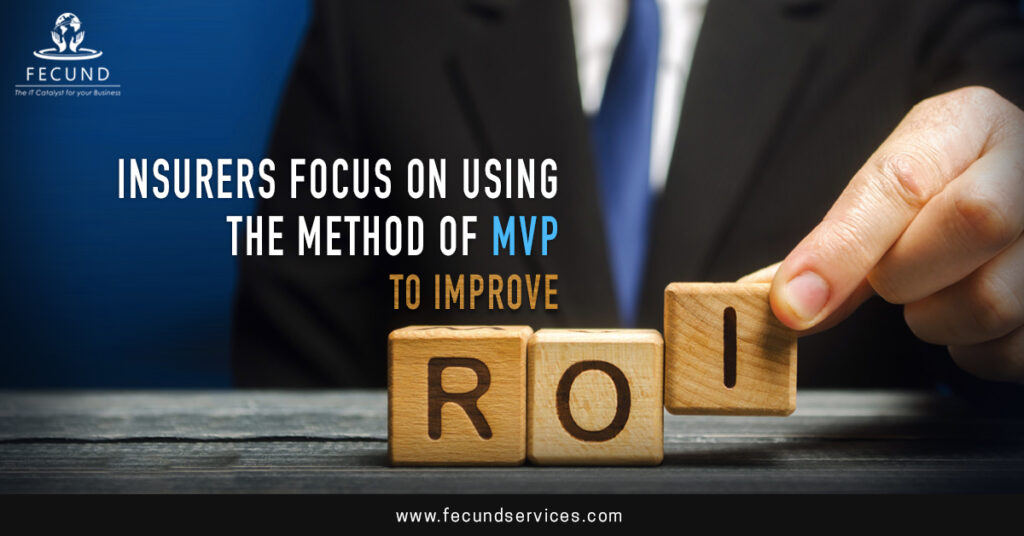
MVP for insurers
Insurance organizations are looking for an IT solution that fulfills the requirement of the business. Low cost, optimum budget, technological flexibility, maintenance, and security are the key objectives while executing the project. However, the primary goal is to create a result that is customer oriented. The barriers that come in front of insurance businesses are that they cannot balance customer needs and software development. When a product is released, the sales need to start as soon as possible. Product software helps insurers to manage the product, customer queries, premium, and many more. For the successful execution of the project, it is crucial to understand the actual needs.
The big bang approach, where insurers try to automate every business function, creates an unclear map where all the decisions are made on the hypothetical case. For product research, insurers use traditional ways where they ask questions to the customers related to the product. The answers depend on the customer’s understanding and imagination about the product or service. The information collected after the customer’s experience and the basis of the hypothetical question provides a different set of data. The difference in the data creates a need for system updates and changes, which increases the cost, time, and energy. In reality, how customers use the system, how they value the product, how much they will pay for it, and how they feel about it will only be understood when customers interact with the product or service.
To solve the problem, the insurer and the IT company can easily understand what the customers want and how they will respond to the product. Many insurers prefer a method known as Minimum Viable Product (MVP).
What is the MVP?
MVP is the version of the product that replicates the actual system and helps to collect enough data with enough features to be used by early customers, which will provide feedback. The feedback helps with product development.
This method is applied to customers’ set to understand customers’ needs, budget and collect data to execute the development process. This method helps with product development, software development, and system development.
Benefits of the MVP.
1. Identify the potential cost
The micro execution of the system can assist in the calculation of the overall system cost. By understanding the policyholders’ response, it is easy to make changes without fully developing the project. Insurers or the project executors can find the area where they can optimize the budget as per the project needs.
2. Focus on functions
After the execution of the project, it is difficult to add or remove the functionality. And the functionality added to the system may cost more than the needed functionality. MVP provides more flexibility to insurance companies to add and remove functions that are project-oriented.
3. Manage time
Time in the insurance business is equal to money. As MVP is a direct execution-based method, it can give a clear picture of the project. This project blueprint helps to understand the time needed for the end project.
4. Understand customer better
It is always difficult to understand human nature. And for insurance companies, customer reaction and perception matter. The use of MVP provides a complete understanding of how customers react, why they react, what impacts them, and how they respond to the product or service. The demographic, physiological, and psychological aspects get cleared, which assist in identifying the customers’ needs, expectations, and behavior.
5. Loophole
It is difficult to find the project’s problem when it is executed and tested without customer interaction. Customers can face problems when they interact with the system.
6. Strategic benefits
A strategy is what drives decisions in the business. It helps to decide where your efforts and resources are spent. MVP gathers data that is used by an insurer to create the strategy.
7. Help to improve the product
Insurance products are not easy to rebuild, and changes take more extended period to implement. It takes multiple decisions and understanding. MVP helps insurers create changes and see customer response that helps to improve the product.
8. Help to improve the software
The user interface, user experience, and content are involved while creating the software. Technical and non-technical terms are involved in software development. MVP gives a clear pathway for developing the software, which helps different stakeholders and entities work in tandem.
9. Improve the system
The system around the product, services, and customers should be in synchronization. System management works toward the smooth work of the system. To get a clear picture of the system, MVP works as a microenvironment.
How to implement MVP?
To stay ahead in the market, the insurance company needs to come up with an innovative product. Let us consider a company that is going to launch a product. They need to start sales as soon as possible. To understand the strategy, customer, and budget, they can implement the module that replicates the actual system. As per the customer response, they can gather the data and modify the project. The step by step improvement while understanding the customer needs to make the project more customer-oriented.
Conclusion:
The purpose of the MVP method for insurers is to understand the customer and collect the data. MVP helps insurers to tackle the future realistic needs of the customers. MVP product allows a team to collect the maximum amount of validated information about customers’ responses with the least effort.




Post a comment